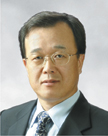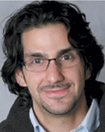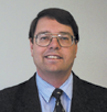|
First Look
Society for Information Display
48th SID INTERNATIONAL SYMPOSIUM
 
May 23-28, 2010
Washington State Convention Center,
Seattle, Washington, USA

Announcing
New Special Topics of Interest
Touch Technology
3-D
Solid-State Lighting
Green Manufacturing
Join us at Display Week 2010 to see what new technologies are shaping our future.

Visit www.sid2010.org for the latest updates.
|
Keynote Session to Reveal the Next Generation of Displays
The Keynote Session, which officially opens the Symposium on Tuesday morning, May 25, will feature three talks that will describe the next generation of displays.
Keynote Speakers
|

Sang-Soo Kim
|

Mike Sinnett
|

Steve Bathiche
|
Dr. Sang-Soo Kim, Executive VP, Samsung Fellow and SID Fellow, Samsung Mobile Display, will describe "The Next Big Thing in Displays." Dr. Kim is responsible for leading the research of large-sized and advanced OLED technology, including flexible and transparent OLED displays, at Samsung. He will address the latest developments in OLED displays and how this technology will result in dramatic changes in the display landscape of the future.
Next, Mr. Mike Sinnett, Vice President/787 Systems Chief Engineer, The Boeing Company, will speak on "Information Displays in Aerospace: Past, Present, and Future." Mr Sinnett will explain how information displays have been an integral part of aviation and will continue to play a vital role for years to come. Aviation applications and their environment present significant challenges for display technology. Solutions for both current and future products represent exciting opportunities.
In conclusion, Mr. Steve Bathiche, Director of Research, Applied Sciences Group, Entertainment and Devices Division, Microsoft Corp., will discuss "Breaking the Fourth Wall: The Next Generation of Interactive Displays." In theater, the fourth wall defines the boundary between the audience and the world of the play. When an actor steps out past the scenery and directly interacts with the audience, he is said to be "breaking the fourth wall." In display technology, we have effectively been held hostage to our own fourth wall — the plane of the display. Mr. Bathiche will explain why the next generation of combined sensing and display technologies offers the promise of reaching past this boundary to create truly immersive, interactive experiences. These will redefine the way we compute, communicate, and entertain ourselves. The technologies that will allow us to break through this wall will be explored.
Luncheon Speaker to Describe
"Behind the Screens at the Beijing Summer Games"

At the annual SID Luncheon to be held Wednesday, May 26, 2010, Mr. Terry Schmidt, Chief Scientist, Christie Digital Systems, Inc., and longtime SID member, will reveal what really happened "Behind the Screens at the Beijing Summer Games." During the 2008 Summer Games in China, the "Bird's Nest" Stadium was aglow with over 2.5 million lumens of high-definition digital video images illuminated by 147 high-power digital projectors. Terry will walk us through the many unique challenges of the high-tech set-up in an outdoor venue of this immense scale and explain how these impressive displays contributed to the overall spectacle of this memorable event.
Special Technology Tracks on 3-D, Green Technology, Solid-State Lighting, and Touch Technology
The four-day (Tuesday, May 25 – Friday, May 28) Display Week 2010 Symposium consists of a record-breaking number of oral presentations allocated into 78 technical sessions across six parallel tracks for 3.5 days.
3-D: This year's technical program will be emphasizing the different developments and approaches that are leading the way toward 3-D entertainment in the home and includes 49 papers (36 oral and 13 posters) on advances in 3-D technology.
Session 3: Polarization-Based Stereoscopic Projection Displays
3.1: A Novel Design of a Stereoscopic 3-D Display with a Patterned Retarder
Hoon Kang, LG Display, Gyeonggi-do, Korea
3.2: A New Approach to Dynamic Polarization 3-D LCDs
Hsiang Tan Lin, Chunghwa Picture Tubes, Ltd.,Taoyuan, Taiwan
3.3: Efficient Polarization-Based Stereoscopic Projector with Extended Color Gamut: Combining Two Projectors into One
Lawrence Bogaert, Vrije Universiteit Brussels, Brussels, Belgium
3.4: Simultaneous Projection of Stereoscopic 3-D Left- and Right-Eye Images in Orthogonal Polarization through a Single Lens
Simon Boothroyd, Thetalili, Inc., Ottawa, Ontario, Canada
3.5: Novel Broadband Retarder Evaluation Metrics for 3-D Projection Display
Yu-Hsiun Chang, National Taiwan University, Taipei, Taiwan
Session 10: Crosstalk in Stereoscopic Displays
10.1: Crosstalk Simulation for Polarization-Switching 3-D LCDs
Youngji Ko, Samsung Electronics Co., Ltd., Gyeonggi-do, Korea
10.2: Crosstalk Suppression by Image Processing in 3-D Displays
Yu-Cheng Chang, National Chiao Tung University, Hsinchu, Taiwan
10.3: Crosstalk Evaluation of Shutter-Type Stereoscopic 3-D Displays
Cheng-Cheng Pan, Chi Mei Optoelectornics Corp., Tainan, Taiwan
10.4: Measuring Gray-to-Gray Crosstalk in an LCD-Based Time-Sequential Stereoscopic Display
Sergey Shestak, Samsung Electronics Co., Ltd., Gyeonggi-do, Korea
Session 16: Autostereoscopic Displays
16.1: Prototyping of Glasses-Free Table-Style 3-D Display for Tabletop Tasks
Shunsuke Yoshida, NICT, Kyoto, Japan
16.2: Backlight for View-Sequential Autostereoscopic 3-D
Adrian Travis, Microsoft, Redmond, WA, USA
16.3: Directional Backlight Timing Requirements for Full-Resolution Autostereoscopic 3-D Displays
John Schultz, 3M, Saint Paul, MN, USA
16.4: The Optics of an Autostereoscopic Multi-Viewer Display
Eero Willman, University College London, London, UK
Session 23: Autostereoscopic Display Measurements
23.1: Viewing Angle and Imaging Polarization Analysis of Polarization-Based Stereoscopic 3-D Displays
Pierre Boher, ELDIM, Herouville, Saint Clair, France
23.2: Optical-Performance-Analysis Method of Autostereoscopic 3-D Displays
Joo Young Lee, Samsung Electronics Co. Ltd., Gyeonggi-do, Korea
23.3: Characterization of 3-D Image Quality of Autostereoscopic Displays: Proposal of Interocular 3-D Purity
Tsutomu Horikoshi, NTT DOCOMO, Kanagawa, Japan
23.4: Qualified Viewing Spaces for Near-to-Eye and Autostereoscopic Displays
Toni Jarvenpaa, Nokia Research Center, Tampere, Finland
Session 30: 2-D/3-D Switching for Autostereoscopic Displays
30.1: Fast-Switching Fresnel Liquid-Crystal Lens for Autostereoscopic 2-D/3-D Display
Chih-Wei Chen, National Chiao Tung University, Hsinchu, Taiwan
30.2: Autostereoscopic 2-D/3-D Displays by Using Liquid-Crystal Lens
Sheng Liu, Chunghwa Picture Tubes, Ltd., Taoyuan, Taiwan
30.3: Autostereoscopic Partial 2-D/3-D Switchable Display Using Liquid-Crystal Gradient-Index Lens
Ayako Takagi, Toshiba Corp., Kawasaki, Japan
30.4: 2-D/3-D Hybrid System for Digital-Signage Application
Chih-Hong Ding, National Chiao Tung University, Hsinchu, Taiwan
Session 37: Human Factors of 3-D Displays
37.1: Invited Paper: 3-D Technology Development and the Human-Factor Effect
Chao-Yuan Chen, AU Optronics Corp., Hsinchu, Taiwan
37.2: New Methodology for Evaluating the Quality of Stereoscopic Images
Cedric Marchessoux, BARCO, Medical Imaging Division, Kortrijk, Belgium
37.3: The Effect of Camera Distortions on Perception of Stereoscopic Scenes
Lachlan Pockett, Nokia Research Center, Tampere, Finland
37.4: Accommodation Response in Viewing Integral Imaging
Byoungho Lee, Seoul National University, Seoul, Korea
Session 44: Volumetric and Integral Imaging
44.1: Volumetric Display Using Scanned Fiber Array
Brian Schowengerdt, University of Washington, Seattle, WA, USA
44.2: An Analysis of Color Uniformity of Three-Dimensional Image Based on Rotating-LED-Array Volumetric-Display System
Xu Liu, Zhejiang University, Zhejiang, China
44.3: Characterization of Motion Parallax on Multi-View / Integral-Imaging Displays
Shin-ichi Uehara, Japanese Ergonomics National Committee, Tokyo, Japan
Session 51: 3-D TV and 3-D Video
51.1: Novel Simultaneous Emission Driving Scheme for Crosstalk-Free 3-D AMOLED TV
Baek-Woon Lee, Samsung Mobile Display, Gyeonggi-do, Korea
51.2: New 240-Hz Driving Method for Full-HD and High-Quality 3-D LCD TV
Dae Sik Kim, Samsung Electronics Co., Ltd., Gyeonggi-do, Korea
51.3: An Ultra-Low-Cost 2-D/3-D Video-Conversion System
Chao-Chung Cheng, National Taiwan University, Taipei, Taiwan
51.4: 3-D Video Framework Design for FVV Realization
Lachlan Pockett, Nokia Research Center, Tampere, Finland
Session 58: Novel 3-D Displays
58.1: 3-D Interactive Display with Embedded Optical Sensor
Pi-Cheng Wu, National Chiao Tung University, Hsinchu, Taiwan
58.2: Spatio-Temporal Hybrid Multi-View 3-D Display
Ching-Wen Wei, National Chiao Tung University, Hsinchu, Taiwan
58.3: Interference-Filter-Based Stereoscopic LCD
Arnold Simon, Infitec GmbH, Neu-Ulm, Germany
58.4: Control of Subjective Depth on 3-D Displays by a Quantified Monocular Depth Cue
Shuichi Takahashi, Sony Corp., Tokyo, Japan
|